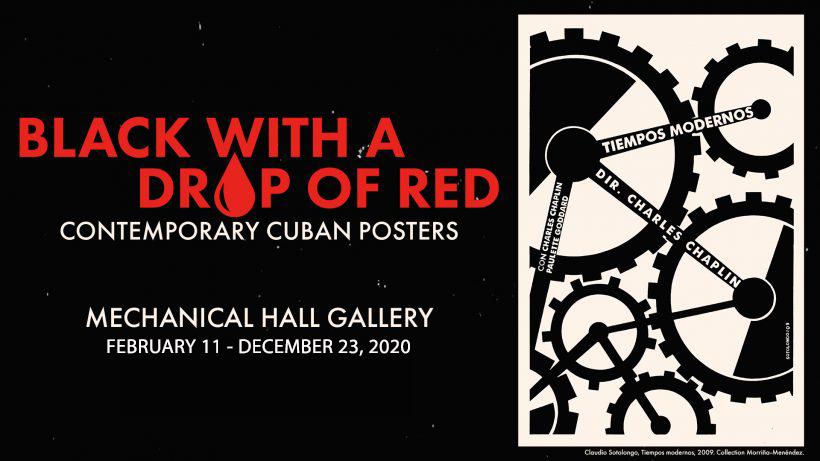
In contemporary Cuba, posters are a major part of visual culture. Following the 1959 Revolution, the newly formed government created the Instituto Cubano del Arte e Industria Cinematográficos (Cuban Institute of Cinematic Art and Industry or ICAIC). The first cultural institution conceived by the new government, ICAIC screened both Cuban and international films for the benefit of all Cubans. As a result of the cultural policy adopted by ICAIC, poster designers were able to experiment with visual vocabulary in order to articulate a complex visual language. The Cuban government’s initiatives made the country a recognized center for both cinema and poster design.
Whether promoting a film, honoring a cultural hero, or announcing an event, the posters included in this exhibition illustrate the visual persuasiveness of the genre. Using silkscreen-printing techniques, the designers included in the exhibition demonstrate the continued allure and influence of poster art in contemporary Cuban design. In contrast with poster art produced in other countries, Cuban posters embrace an aesthetic that emphasizes the power of distilled imagery to convey the essence of an entire film or cultural event.
This online exhibition in four parts reflects the gallery installation in Mechanical Hall on University of Delaware's campus. The posters were selected by Claudio Sotolongo, designer and professor in the Department of Art History at the University of Havana. The posters on view aim to communicate the vibrancy of contemporary Cuba.
Texts were written by Claudio Sotolongo, Tiarna Doherty, Ashley Rye-Kopec, Eileen Symons and Amanda Zehnder. The online exhibition design and gallery design were by Brian Kamen.

